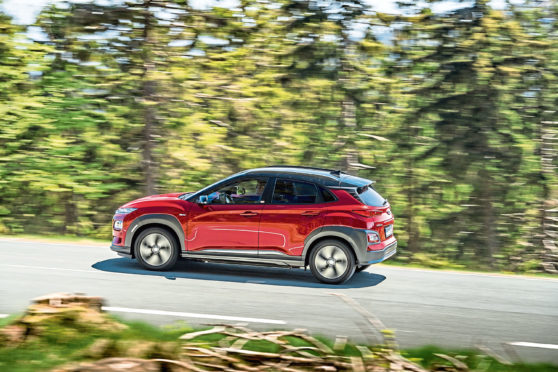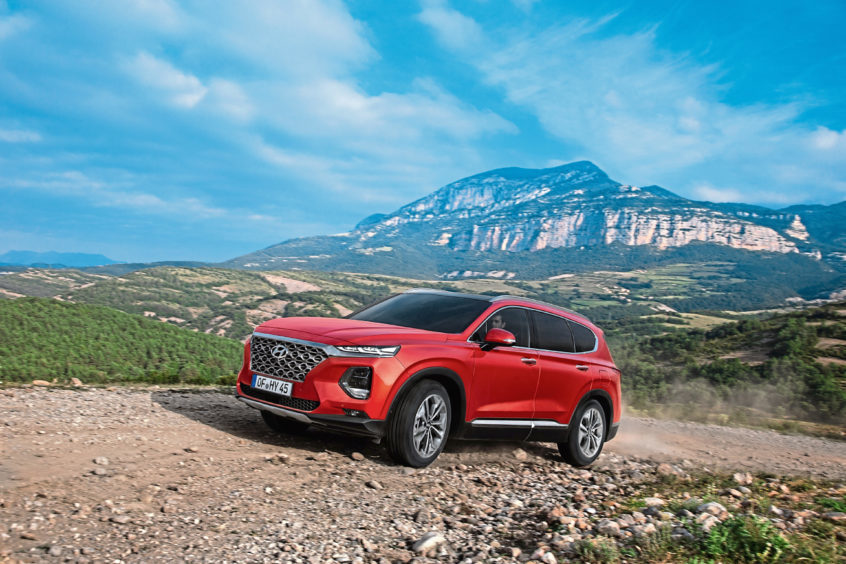A fully electric version of Hyunda’s compact Kona SUV will have a range of up to 300 miles.
Joining the petrol variants and forthcoming diesel model, the Kona Electric will be available in two variants.
There’s a lower-powered model with a 39kWh battery and 133bhp motor, offering an official 186-mile range, or a 64kWh / 201bhp model with a range of up to 300 miles.
The former model accelerates past 62mph in 9.7 seconds and goes on to 96mph, while the 64kWh version achieves a 7.6-second 0-62mph time and 104mph.
The smaller battery takes a little over six hours to fully charge using a standard domestic power supply while the larger battery needs 9 hours 35 minutes to fill up. Both can be charged much more quickly using public charge points.
Factoring in the government grant of £4,500 for plug-in electric cars, prices for the electric Kona start at around £25,000 for the smaller battery pack and a little under £30,000 for the longer range model.
Differentiating the electric Kona from the petrol or diesel version is the futuristic looking grille, which contains the port to charge the car’s battery.
All electric Konas come with standard safety features including: autonomous emergency braking with pedestrian recognition; forward collision warning; hill start assist; lane keep assist; smart cruise control, and a tyre pressure monitoring system.
Other systems, including blind spot detection, lane follow assist and rear cross traffic alert, are also available depending on trim level.
All Kona electric models also come with Hyundai’s five-year unlimited mileage warranty.
Order books open on August 2. Initially the electric Kona will only be available to order on Hyundai’s website, with the car being rolled out across dealerships through the remainder of this year and into 2019.
In other Hyundai news, the Korean company has released details on its all-new Santa Fe. The car maker’s largest SUV will cost from £33,425 when it goes on sale at the beginning of September.
More dramatic looks and better technology should help the Hyundai compete with some strong rivals such as the Skoda Kodiaq and Peugeot 5008.
It will be offered in three trim levels at launch: SE (from £33,425), Premium (from £36,995) and top-spec SE Premium (from £41,495).
Even entry level SE versions have a good level of standard equipment, including seven seats, 17-inch alloys, roof rails, front and rear parking sensors, a rear-view camera, rear privacy glass, dual-zone climate control, heated front seats and automatic wipers and lights.
All models are powered by a 2.2 litre diesel engine with a choice of six-speed manual or eight speed automatic and two or four-wheel drive.

